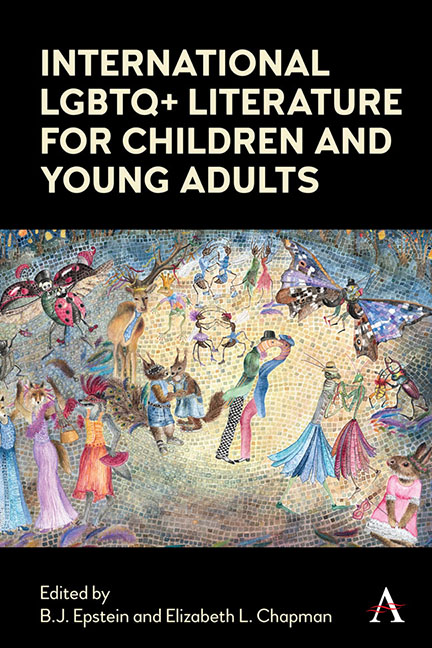Book contents
- Frontmatter
- Dedication
- Contents
- List of Illustrations
- Acknowledgements
- Notes on contributors
- Introduction
- BRAZIL
- FRANCE
- GERMANY/ AUSTRIA
- GREENLAND
- INDIA
- INDIGENOUS WRITING
- ITALY
- MULTINATIONAL
- MULTINATIONAL
- MULTINATIONAL
- THE PHILIPPINES
- SLOVENIA
- SOUTH KOREA
- SPAIN
- SWEDEN
- SWEDEN
- List of Primary Texts
- Index
Chapter Nine - Morals, Society and Distribution: LGBTQ+ Literature for Young Readers in the Arab World
Published online by Cambridge University Press: 18 November 2021
- Frontmatter
- Dedication
- Contents
- List of Illustrations
- Acknowledgements
- Notes on contributors
- Introduction
- BRAZIL
- FRANCE
- GERMANY/ AUSTRIA
- GREENLAND
- INDIA
- INDIGENOUS WRITING
- ITALY
- MULTINATIONAL
- MULTINATIONAL
- MULTINATIONAL
- THE PHILIPPINES
- SLOVENIA
- SOUTH KOREA
- SPAIN
- SWEDEN
- SWEDEN
- List of Primary Texts
- Index
Summary
Introduction
As noted in the introduction to this book, we were disappointed but not surprised to discover that there were some countries or regions where we struggled to find scholars who were willing to write about LGBTQ+ literature for young readers. The Arab world, which of course is a large and very diverse area and cannot accurately be characterized or described as just one thing, is a region where we were unable to connect with an appropriate scholar who was willing and able to write a piece for us. Multiple academics who work on Arabic literature told us that there was no LGBTQ+ literature for children there, or that there only existed literature that could be read queerly by a knowing reader. Unfortunately, no one agreed to explore that perspective and write that analysis for us.
We did, however, find a scholar of Arabic-language children's literature who kindly provided us with some comments on the situation in their region, which we have lightly paraphrased and edited and are publishing anonymously here, at their request. We feel that it is helpful to try to understand why such literature apparently does not yet exist there, in order to consider whether this might change in the near future. This brief introduction to LGBTQ+ issues and books for children and young adults in the Arab world is a useful overview, and we can only hope that scholars, authors and publishers in the Arabic-speaking countries will feel able to produce, and eventually critique, more work for young readers in the very near future. Here is their paraphrased commentary, which we thank them for, even if we cannot give them credit as we would have liked, because they feel it is safer to remain anonymous.
Commentary
The Arab world is comprised of 22 countries with a population of more than 350 million people. The main language is Arabic and the main religion is Islam; culture and community play a major role in the region. The importance of being part of the community, following traditions and cherishing family bonds are some of the main traits that define Arabic society.
- Type
- Chapter
- Information
- International LGBTQ+ Literature for Children and Young Adults , pp. 181 - 182Publisher: Anthem PressPrint publication year: 2021

